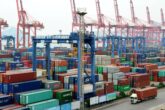October 30, 2018
The Financing of WMD Proliferation
Conducting Risk Assessments
The proliferation of weapons of mass destruction is a critical threat facing the international community. Numerous United Nations Security Council Resolutions (UNSCRs) place binding obligations on member states to put in place measures to combat proliferation threats, whether from non-state actors, including terrorist groups, or specific state actors like North Korea. Among the tools to counter the spread of WMDs is the adoption of policies designed to deter, disrupt, and eliminate the financing of proliferation.
In recent years, international organizations, with significant input from concerned parties like the United States, have offered guidance to financial institutions on countering proliferation finance (CPF). In particular, the Financial Action Task Force (FATF), the international financial crimes standard-setter, has tried to address the fact that not all national governments or banks understand what proliferation finance is, how to identify it, and how to put in place measures to combat it. But proliferation finance is difficult to detect, and even among the most effectively governed jurisdictions, whose financial institutions are among the largest, most well-resourced, and most focused on combating financial crimes, it is very difficult to track proliferation financing activity.
Key Takeaways
- Despite the threat from the financing of proliferation of nuclear and other weapons of mass destruction (WMD), only a handful of governments and companies are taking meaningful steps to counter it.
- This paper outlines the various sources of the threat, the international control framework, and how authorities and financial sector actors fit into the countering proliferation finance regime. Effective partnership between them is essential to identifying and countering the threat.
- The paper describes how authorities and financial institutions should conduct proliferation financing risk assessments, a necessary first step to take to protect themselves, and the indicators to take into account and procedures to follow.
Fortunately for national governments and financial institutions, there are no insuperable obstacles to building a stronger regime to counter proliferation finance. Among the first steps in understanding and combating proliferation finance is understanding the risk exposure of individual jurisdictions and their financial institutions. This paper offers guidance to national authorities and to financial sector actors on the components of such a risk assessment, including sources of proliferation risks, indicators, and how financial institutions should monitor customers’ profiles and behavior to detect proliferation financing.
Importantly, this paper offers a points-based blueprint for measuring specific levels of proliferation finance risk, which financial institutions could use as benchmarks against which to monitor their customers and their businesses
Fortunately for national governments and financial institutions, there are no insuperable obstacles to building a stronger regime to counter proliferation finance.
Conducting a proliferation financing risk assessment is a necessary first step to enable authorities and financial institutions to understand the threat and identify measures necessary for mitigation. Proliferation financing risk assessments do not require authorities or financial institutions to put in place new business procedures. They can be conducted by adapting existing procedures for assessing risks of money laundering or terrorist financing. This paper shows how this can be done.
The full report is available online
More from CNAS
-
Trump Tariffs: How Will U.S. Plans Reshape the Global Economy?
Donald Trump says he's already decided the tariffs he will impose on countries that export goods to America, including the United Kingdom. Channel 4 hears from Emily Kilcrease...
By Emily Kilcrease
-
Edward Fishman on the Age of Economic Warfare
In the latest episode of the Sanctions Space Podcast, Justine is joined by Edward Fishman, author of Chokepoints: American Power in the Age of Economic Warfare and an adjunct ...
By Edward Fishman
-
The World Has Changed Since Trump’s First Trade War. Other Countries Are Ready to Fight Back.
With so many countries armed and ready, the challenge for Trump will be to use economic weapons to advance U.S. interests without leaving America isolated or ruining the world...
By Edward Fishman
-
Ziemba: China Could Impose Retaliatory Tariffs on U.S.
If tariffs and costs continue to rise, it will not be great for oil demand within the US, that's according to Rachel Ziemba, Adjunct Senior Fellow at the Center for a New Amer...
By Rachel Ziemba





